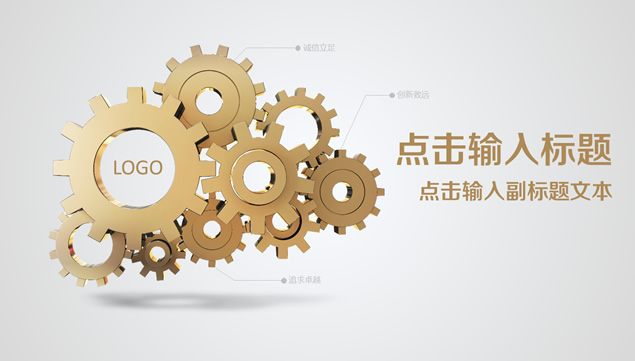 Backend Development
Backend Development
 PHP Tutorial
PHP Tutorial
 Summarize the practices of the previous article and the next article
Summarize the practices of the previous article and the next article
Summarize the practices of the previous article and the next article
This article mainly introduces the method of dedecms to get the link to the previous and next article. This article explains how to use PHP to get the link to the previous and next article. Friends who need it can refer to it. We know that in The link and title of the article before and after the article page is called. dedecms defaults to the labels of the previous article and the next article as {dede:prenext get='pre'/} {dede:prenext get='next'/}. Sometimes out of necessity, we only need links without titles. How to do this? Everyone should be able to think of using regular expressions, right? That’s right! The final implementation code is given below. dedecms template download address: www.php.cn/xiazai/code/dedecms The previous article address code is as follows: {dede:prenext get='pro' runphp="yes"}preg_match_all('/(.+?)<\ /a.*?>/sim&a
1. Details about the article link

##Introduction: This article mainly introduces the method of dedecms to get the link to the previous and next article. This article explains how to use PHP to get the link to the previous and next article. What is needed Friends can refer to what we know. When calling the links and titles of articles before and after the article page, dedecms defaults to the labels of the previous article and the next article as {dede:prenext get='pre'/} {dede: prenext get='next'/}. Sometimes out of necessity, we only need links without titles,...
##2. How to get the link to the previous and next article #Introduction: This article mainly introduces the weaving Meng dedecms how to get the link to the previous and next article. This article explains how to use PHP to get the link to the previous and next article. Friends who need it can refer to
#Introduction: This article mainly introduces the weaving Meng dedecms how to get the link to the previous and next article. This article explains how to use PHP to get the link to the previous and next article. Friends who need it can refer to
3. Summary of method examples of PHP implementation of the previous article and the next article
##Introduction: This article It mainly introduces the method of realizing the previous and next article in PHP, and summarizes and analyzes the query skills related to the SQL operation of PHP to obtain the previous and next article in the form of examples. Friends in need can refer to the following 
4. yii2 code example to implement the "previous article, next article" function
Introduction: It is necessary to add the previous article and next article buttons on many pages. The editor thinks it is quite good. Now I will share it with you and give it a reference. Let’s follow the editor and take a look. 
ecshop calls the article to display the previous article and the next article_html/css_WEB-ITnose
Introduction: ecshop Call the article to display the previous and next article
6.phpcms2008:phpcms2008 adds the function of the previous and next article
Introduction: Step 1: Modify show.php and add code in front of the code if(!$C['defaultchargepoint'] !$r['readpoint']) //FKE.LA add code//Previous article $more_pre = $db-get_one("SELECT title,url FROM `".DB_PRE."content` WHERE `c
7.PHP implements the previous article of the content page Function of an article
#Introduction: In content stations or product stations, for a better user experience, the previous article and next article are generally given on the content page. links to articles PHP code to implement the previous and next functions of the content page $previous is the id of the previous article $next_item is the id of the next article $id_array = array();//Get the content id array of the category in the specified order //Get the id of the previous article and next article if (is_array($id_array)) { res
8.phpcms2008 adds the function of next post and previous post
Introduction: phpcms2008 adds the function of previous article and next article
Step 1: Modify show.php and add code in front of the code if(!$C['defaultchargepoint'] && !$r['readpoint']) //
##9. phpcms2008Add the function of next article and previous article
Introduction: phpcms2008 adds the function of previous article and next article. Step 1: Modify show.php in front of the code if(!$C['defaultchargepoint'] && !$r['readpoint']) Add code //
php Summary of methods to implement the previous article and next article
Introduction: php implements the previous article and next article mainly through sql to judge based on the current id Then filtering out the data before the current ID or the data after the ID is that simple. Let’s take a look at the details. [Related Q&A recommendations]:#. ##html - Why is this invalid in php?
The above is the detailed content of Summarize the practices of the previous article and the next article. For more information, please follow other related articles on the PHP Chinese website!

Hot AI Tools

Undresser.AI Undress
AI-powered app for creating realistic nude photos

AI Clothes Remover
Online AI tool for removing clothes from photos.

Undress AI Tool
Undress images for free

Clothoff.io
AI clothes remover

Video Face Swap
Swap faces in any video effortlessly with our completely free AI face swap tool!

Hot Article

Hot Tools

Notepad++7.3.1
Easy-to-use and free code editor

SublimeText3 Chinese version
Chinese version, very easy to use

Zend Studio 13.0.1
Powerful PHP integrated development environment

Dreamweaver CS6
Visual web development tools

SublimeText3 Mac version
God-level code editing software (SublimeText3)

Hot Topics
 Alipay PHP SDK transfer error: How to solve the problem of 'Cannot declare class SignData'?
Apr 01, 2025 am 07:21 AM
Alipay PHP SDK transfer error: How to solve the problem of 'Cannot declare class SignData'?
Apr 01, 2025 am 07:21 AM
Alipay PHP...
 Explain JSON Web Tokens (JWT) and their use case in PHP APIs.
Apr 05, 2025 am 12:04 AM
Explain JSON Web Tokens (JWT) and their use case in PHP APIs.
Apr 05, 2025 am 12:04 AM
JWT is an open standard based on JSON, used to securely transmit information between parties, mainly for identity authentication and information exchange. 1. JWT consists of three parts: Header, Payload and Signature. 2. The working principle of JWT includes three steps: generating JWT, verifying JWT and parsing Payload. 3. When using JWT for authentication in PHP, JWT can be generated and verified, and user role and permission information can be included in advanced usage. 4. Common errors include signature verification failure, token expiration, and payload oversized. Debugging skills include using debugging tools and logging. 5. Performance optimization and best practices include using appropriate signature algorithms, setting validity periods reasonably,
 How does session hijacking work and how can you mitigate it in PHP?
Apr 06, 2025 am 12:02 AM
How does session hijacking work and how can you mitigate it in PHP?
Apr 06, 2025 am 12:02 AM
Session hijacking can be achieved through the following steps: 1. Obtain the session ID, 2. Use the session ID, 3. Keep the session active. The methods to prevent session hijacking in PHP include: 1. Use the session_regenerate_id() function to regenerate the session ID, 2. Store session data through the database, 3. Ensure that all session data is transmitted through HTTPS.
 Describe the SOLID principles and how they apply to PHP development.
Apr 03, 2025 am 12:04 AM
Describe the SOLID principles and how they apply to PHP development.
Apr 03, 2025 am 12:04 AM
The application of SOLID principle in PHP development includes: 1. Single responsibility principle (SRP): Each class is responsible for only one function. 2. Open and close principle (OCP): Changes are achieved through extension rather than modification. 3. Lisch's Substitution Principle (LSP): Subclasses can replace base classes without affecting program accuracy. 4. Interface isolation principle (ISP): Use fine-grained interfaces to avoid dependencies and unused methods. 5. Dependency inversion principle (DIP): High and low-level modules rely on abstraction and are implemented through dependency injection.
 What are Enumerations (Enums) in PHP 8.1?
Apr 03, 2025 am 12:05 AM
What are Enumerations (Enums) in PHP 8.1?
Apr 03, 2025 am 12:05 AM
The enumeration function in PHP8.1 enhances the clarity and type safety of the code by defining named constants. 1) Enumerations can be integers, strings or objects, improving code readability and type safety. 2) Enumeration is based on class and supports object-oriented features such as traversal and reflection. 3) Enumeration can be used for comparison and assignment to ensure type safety. 4) Enumeration supports adding methods to implement complex logic. 5) Strict type checking and error handling can avoid common errors. 6) Enumeration reduces magic value and improves maintainability, but pay attention to performance optimization.
 How to debug CLI mode in PHPStorm?
Apr 01, 2025 pm 02:57 PM
How to debug CLI mode in PHPStorm?
Apr 01, 2025 pm 02:57 PM
How to debug CLI mode in PHPStorm? When developing with PHPStorm, sometimes we need to debug PHP in command line interface (CLI) mode...
 How to automatically set permissions of unixsocket after system restart?
Mar 31, 2025 pm 11:54 PM
How to automatically set permissions of unixsocket after system restart?
Mar 31, 2025 pm 11:54 PM
How to automatically set the permissions of unixsocket after the system restarts. Every time the system restarts, we need to execute the following command to modify the permissions of unixsocket: sudo...
 How to send a POST request containing JSON data using PHP's cURL library?
Apr 01, 2025 pm 03:12 PM
How to send a POST request containing JSON data using PHP's cURL library?
Apr 01, 2025 pm 03:12 PM
Sending JSON data using PHP's cURL library In PHP development, it is often necessary to interact with external APIs. One of the common ways is to use cURL library to send POST�...





